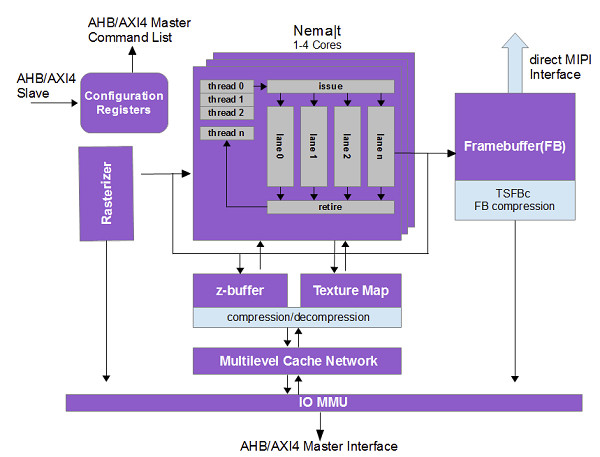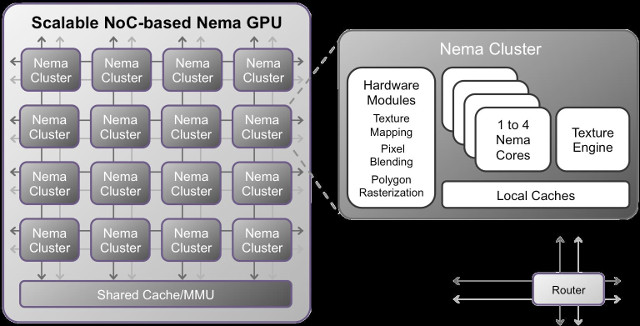When you have to purchase a wearable device, let’s say a smartwatch or fitness tracker, you have to make trade offs between user interface and battery life. For example, a fitness tracker such as Xiaomi Mi Band 2 will last about 2 weeks per charge with a limited display, while Android smartwatches with a much better interface need to be recharged every 1 or 2 days. Think Silicon aims to improve battery life of the devices with nicer user interfaces thanks to their ultra-low power NEMA 2D, 3D, and GP GPU that can be integrated into SoCs with ARM Cortex-M and Cortex-A cores.

The company has three family of GPUs:
- NEMA|p pico 2D GPU with one core
- 4bpp framebuffer, 6bpp texture with/out alpha
- Fill Rate – 1pixel/cycle
- Silicon Area – 0.07 mm2 with 28nm process
- Power Consumption – leakage power GPU consumption of 0.06mW; with compression (TSFSc): 0.03 mW
- NEMA|t tiny 2D & 3D GPU with one to 4 cores
- 4bpp framebuffer, 6bpp texture with/out alpha
- OpenGL ES support
- Can render a 420×420 3D UI @ 80 MHz
- Fill Rate – 1-4pixel/cycle; up to 1,600 MPixel/s for the quad core version @ 400 MHz
- Silicon Area – 0.1 to 0.25 mm2 with 28nm process
- Power Consumption – leakage power GPU consumption of 0.07mW; with proprietary compression technology (TSFBc, TSTXc): 0.03 mW
- NEMA|s GPGPU with one to four cores
- Supports Network On Chip (NoC) interconnect for clusters with each cluster supporting up to four cores, and each core handling up to 128 threads
- Fill Rate – 1pixel/cycle
- Silicon Area and Power Consumption – TBA, as Nema|s is only implemented via FPGA for now

The first two models are available right now, while the third is still in development. The company is also working on the fourth family with NEMA|ts “tiny small” GPU, but no details have been provided.
Provided the website is up-to-date, NEMA|p 2D GPU is supported in FreeRTOS V8.0.1 and Linux kernel 3.x, while NEMA|t can be used in Linux 3.x and Android 4.x. The company also provides a software library in ANSI C, as well as DirectFB and Qt support.
I found out about the NEMA through a Charbax video at Mobile World Congress 2017.

Think Silicon GPUs are said to be already used in Microchip and Dialog MCUs, and Sequant recently announced an “LTE for IoT System-on-Chip” with a NEMA|p 2D/2.5D GPU. The demo in the video above also shows an Ambiq Micro board connected to an FPGA implementation of one of their GPUs. You’ll find more information on Think Silicon website.

Jean-Luc started CNX Software in 2010 as a part-time endeavor, before quitting his job as a software engineering manager, and starting to write daily news, and reviews full time later in 2011.
Support CNX Software! Donate via cryptocurrencies, become a Patron on Patreon, or purchase goods on Amazon or Aliexpress




If that has an oss driver we should all wish them luck and hope they will expand well into higher class gpu ranges 😉